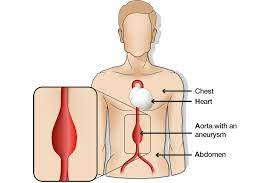
Aortic Aneurysm Screening: Ensuring Your Health and Well-being
Welcome to my personal website page about aortic aneurysm screening. I Noel Christopher recently underwent on Wednesday 6th March 2024 at Orsett Hospital Essex RM16 3EU. This crucial screening test for the age 65 plus, and I’m pleased to share that the results were a very positive outcome. As a result, I won’t need to repeat the test anytime soon, considering that aortic aneurysms take a significant amount of time to develop into a noticeable bulge. So I will not ever need one again.
Let’s delve into what an aortic aneurysm truly entails. It refers to a bulge that forms in the wall of the body’s primary artery, known as the aorta. This vital artery carries blood from the heart to the rest of the body. Aortic aneurysms can arise anywhere along the aorta, taking on either a tube-shaped or round appearance.
There are two primary types of aortic aneurysms:
1. Abdominal Aortic Aneurysm (AAA): This type occurs in the segment of the aorta that passes through the abdominal area. It manifests as a swelling in the aorta, the artery responsible for transporting blood from the heart to the abdomen. While most aneurysms don’t present immediate problems, they can pose a serious risk of rupture, which demands prompt attention.
2. Thoracic Aortic Aneurysm: This variant develops in the portion of the aorta that passes through the chest cavity. It requires careful monitoring and management to prevent potential complications.
In the case of an abdominal aortic aneurysm (AAA), symptoms may not be readily apparent. Often, individuals discover they have an aneurysm during an abdominal aortic aneurysm screening test or while undergoing tests for unrelated conditions. However, if an aneurysm grows larger, certain signs may start to manifest, such as tummy or back pain, as well as a pulsing sensation in the abdominal region.
Regular screening for aortic aneurysms is crucial for maintaining your health and preventing potential complications. It allows healthcare professionals to detect any abnormalities early on, enabling timely intervention and monitoring. By prioritizing aortic aneurysm screening, you’re taking a proactive step towards safeguarding your well-being.
If you have any concerns or would like to learn more about aortic aneurysm screening, please feel free to check the link below. Stay informed, stay healthy!
